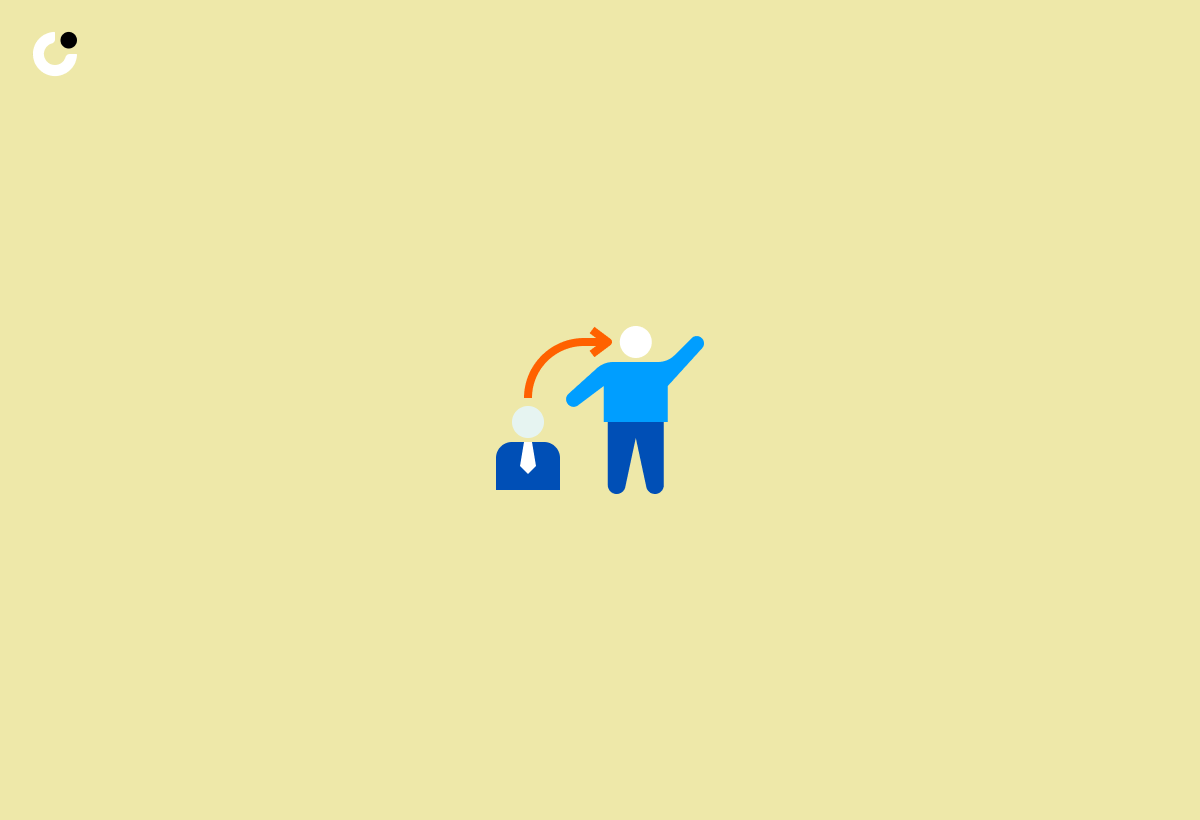Imagine unlocking the door to your dream career, all by mastering the art of cold emailing potential mentors with the help of a cold email mentor. In today’s fast-paced world, finding the right mentor can be a game-changer in achieving your goals.
In this blog post, we will guide you through a 7-step process, developed by our cold email mentor, to help you connect with potential mentors and build long-lasting, valuable relationships.
Key Takeaways
- Craft an irresistible subject line to capture potential mentors’ attention.
- Identify the right mentor through shared interests, career paths and research.
- Demonstrate genuine interest by personalizing your cold email with mutual connections or references to their work.
Crafting an Irresistible Subject Line

The subject line is your first chance to make an impression on a potential mentor. To capture their attention and boost response rates, an enticing subject line is a must. Keep it concise, targeted, and engaging, referencing professional interests or something that stands out from the typical emails in their inbox. If you have a mutual connection, don’t hesitate to mention it, as it can help establish trust and credibility.
Remember, potential mentors are often incredibly busy. Make your cold email stand out and respect their time. A well-crafted subject line can be the first step towards establishing a positive relationship with a mentor, transforming your career, and opening doors to new opportunities.
Identifying the Right Mentor

Before initiating contact with potential mentors, pinpointing the right person to connect with is a vital step. In the following sections, we will explore three crucial factors to consider when searching for the perfect mentor: shared interests, career paths, and research. By focusing on these aspects, you increase the chances of building a mutually beneficial long-term relationship with your mentor.
Shared Interests

Identifying potential mentors who share your interests can infuse a personal, relevant, and relatable touch to your cold email. Here are some ways to find common ground with potential mentors:
- Dive deep into their company profile, website, or personal blog
- Check their social media profiles for shared interests
- Attend events or join online communities where they are active
- Reach out to alumni who may have similar interests
By finding common ground, such as a relevant blog post, you can make your cold email more engaging and increase your chances of getting a positive response through cold emailing.
Once you’ve discovered shared interests, mention them in your cold email and ask for advice on how to succeed in the relevant field. By connecting on a personal level, you increase the likelihood of receiving a response and forging a genuine connection with your potential mentor.
Career Paths

A mentor who has treaded a similar career path as yours and has experience in your desired field can offer invaluable insights and guidance from their past job, enabling you to surmount obstacles and traverse your professional journey smoothly. Instead of solely focusing on big-name executives, seek out mentors who have faced analogous challenges.
By learning from someone who has walked a similar path, you gain access to practical advice, problem-solving techniques, and industry-specific knowledge that can propel your career forward. Remember, the best mentor for you might not be the most famous person in your field but someone who truly understands the challenges you face and can help you overcome them.
Research

Performing in-depth research on potential mentors plays a key role in personalizing your cold email and showcasing your genuine interest in their work. Spend time learning about their professional journey, listening to podcasts, reading articles, or attending events like the Fast Company’s Innovation Festival.
Once you’ve gained a comprehensive understanding of their background and accomplishments, you can tailor your email to their specific interests and expertise. By showcasing your sincere interest in their work, you increase the chances of receiving a response and laying the foundation for a successful mentorship relationship.
Personalizing Your Cold Email

When composing a cold email, its indispensability to differentiate it from the myriad of generic messages inundating your potential mentor’s inbox can’t be overstated. Focus on the recipient, not yourself, and ensure that they have a positive impression of you after reading the email.
To personalize your email, mention mutual connections or reference specific aspects of their work that resonate with you. This not only demonstrates your genuine interest but also shows that you’ve taken the time to research and understand their background, making your email more likely to elicit a response.
The Art of Asking for Mentorship

Having identified the right mentor and penned a personalized cold email, the next step is to perfect the skill of requesting mentorship. In the following sections, we’ll explore three key principles to guide your request: being specific, being respectful, and offering an easy out. By adhering to these guidelines, you’ll increase your chances of establishing a successful mentorship relationship.
Be Specific

As you seek advice through mentorship, being precise about your goals and the kind of guidance you need is of utmost importance. Generic advice can be difficult to respond to and may not yield helpful results. Instead, ask just what particular aspect of their life where their knowledge can assist you in overcoming your own challenges.
For instance, if you admire their ability to network effectively, ask for tips on how to build meaningful connections in your industry. By being specific and relevant, you demonstrate that you value their expertise and are genuinely interested in learning from their experiences.
Be Respectful

Approaching potential mentors with respect and humility lays the groundwork for a successful mentorship relationship. Recognize their expertise and the value of their time, and always express gratitude for their willingness to offer guidance.
When asking for mentorship, avoid making requests that fall under their professional responsibilities. Instead, focus on how their insights can help you grow personally and professionally, demonstrating your commitment to learning and self-improvement.
Offer an Easy Out

Providing an “easy out” in your mentorship request allows potential mentors to decline without feeling uncomfortable or pressured. This demonstrates respect for their time and boundaries, increasing the likelihood of a positive response even if they don’t have the capacity to mentor you at the moment.
To offer an easy out, keep your request simple and concise, and emphasize that you understand they may be busy and unable to commit to mentorship at this time. By doing so, you leave the door open for potential mentorship opportunities in the future and maintain a positive relationship with the potential mentor.
Following Up and Building the Relationship

After dispatching your initial cold email, following up and cultivating a relationship with your potential mentor is a fundamental step.
In the following sections, we will explore two key strategies for fostering a successful mentorship relationship: persistence and providing value.
Persistence Pays Off

When following up on your cold email, persistence holds the key. However, it’s important to strike a balance between being persistent and giving potential mentors enough time to respond before sending gentle reminders.
A recommended time frame for follow-ups is two to three weeks after your initial contact. This allows potential mentors time to consider your request and demonstrates your commitment to building a mentorship relationship without overwhelming them.
Providing Value

Continuously adding value to your potential mentor by understanding their needs and offering possible solutions or assistance is a cornerstone of a successful mentorship relationship. This can include sharing resources, volunteering to help with tasks, or giving feedback and advice.
By offering value to your potential mentor, you demonstrate your commitment to learning and growth, as well as your appreciation for the guidance they provide. This not only strengthens the mentor-mentee relationship but also ensures that both parties benefit from the partnership.
Navigating the First Meeting

Once a response to your cold email is in hand, the next move is to steer through the first meeting with your potential mentor. During this initial interaction, it’s crucial to set clear expectations and come prepared with thoughtful questions that demonstrate your genuine interest in their expertise and guidance.
In addition to asking relevant questions, take the time to listen and absorb the information your potential mentor shares with you. By doing so, you not only show respect for their time and expertise but also lay the foundation for a successful, long-term mentorship relationship.
Transitioning to Long-Term Mentorship

Following a successful first meeting, the subsequent step is to evolve from an initial connection into a long-term mentorship. To achieve this, maintain consistent communication and demonstrate your commitment to learning and development.
It’s suggested to meet with your mentor at least once a month, but the frequency and duration of meetings can be tailored to your specific needs and feedback. By keeping the lines of communication open and showing dedication to growth, you solidify the mentor-mentee relationship and pave the way for a fruitful partnership.
Summary
In conclusion, cold emailing potential mentors can be a transformative experience, opening doors to new opportunities and career growth. By following the 7-step process outlined in this blog post, you can increase your chances of connecting with the right mentor and building a long-lasting, mutually beneficial relationship. Remember, the key to success lies in crafting an irresistible subject line, identifying the right mentor, personalizing your cold email, asking for mentorship with respect, following up, and building a strong mentor-mentee relationship.
Frequently Asked Questions
How do you write a cold email for guidance?
When writing a cold email for guidance, start by greeting the recipient by name. Craft a personal opening line that grabs their attention and establishes credibility for yourself. Keep the message short and concise, outlining why you are contacting them and providing a specific request. Make it clear what's in it for them and include a call to action. Don't forget to be friendly, conversational, and thank the person for their time.
How do you ask for mentorship in an email?
I'm writing to inquire about your interest in mentoring me. I'm currently at a stage in my career where I would like to specialize in [mention area], and am eager to benefit from your guidance. I'd be grateful for the opportunity to learn from someone of your experience and expertise. Would you be open to discussing further? Thank you for your consideration.
Is cold email outreach legal?
Cold email outreach is not illegal in the US, but must adhere to the CAN-SPAM Act provisions, which require accurate information, a physical address, and an unsubscribe link.
How do I craft an irresistible subject line for my cold email?
Be concise and engaging, reference professional interests or stand out from the crowd, and mention mutual connections, if applicable, to craft an irresistible subject line for your cold email.
What factors should I consider when identifying the right mentor?
When identifying the right mentor, consider shared interests, career paths, and background research. Connecting with mutual contacts will help ensure a successful mentoring relationship.

